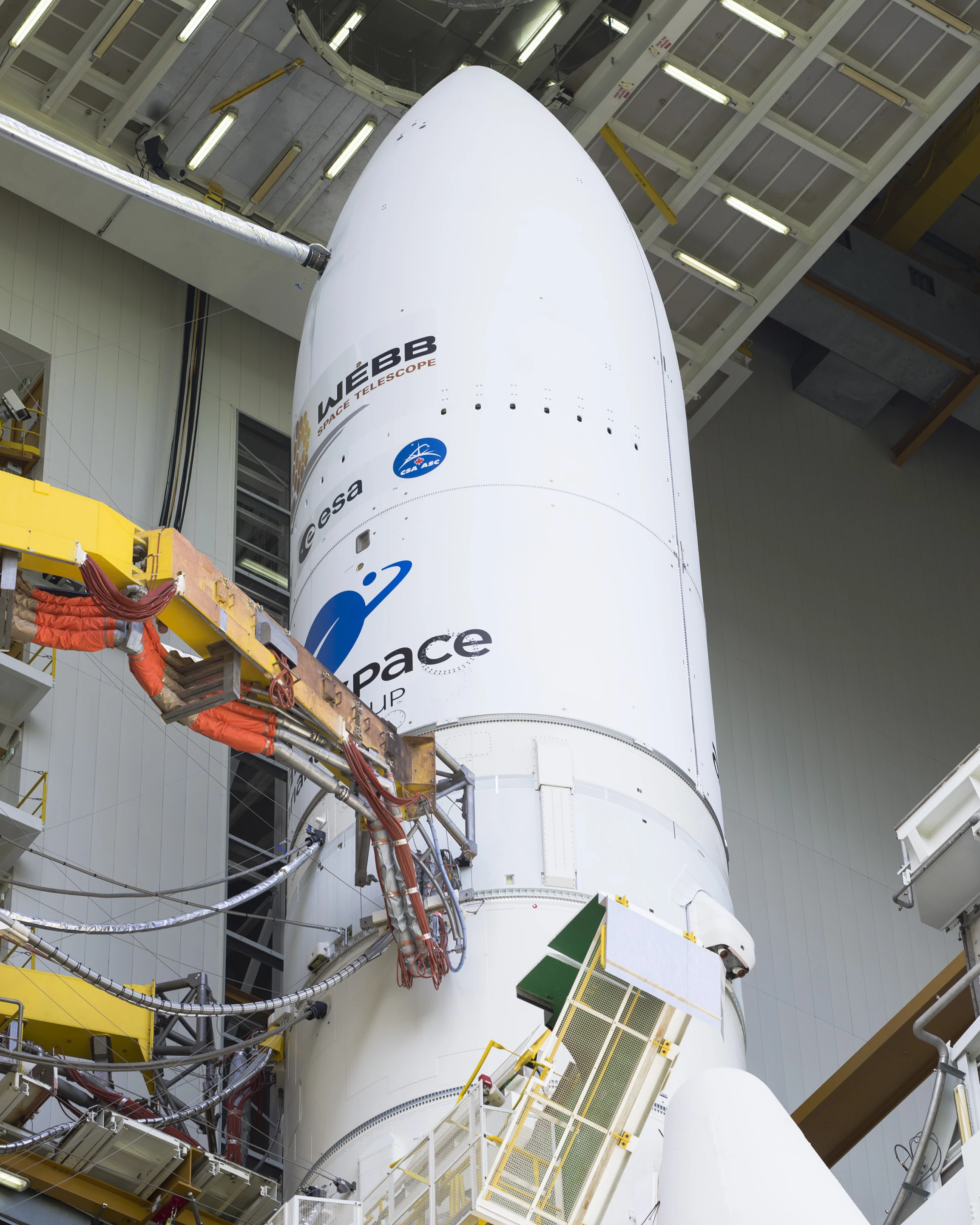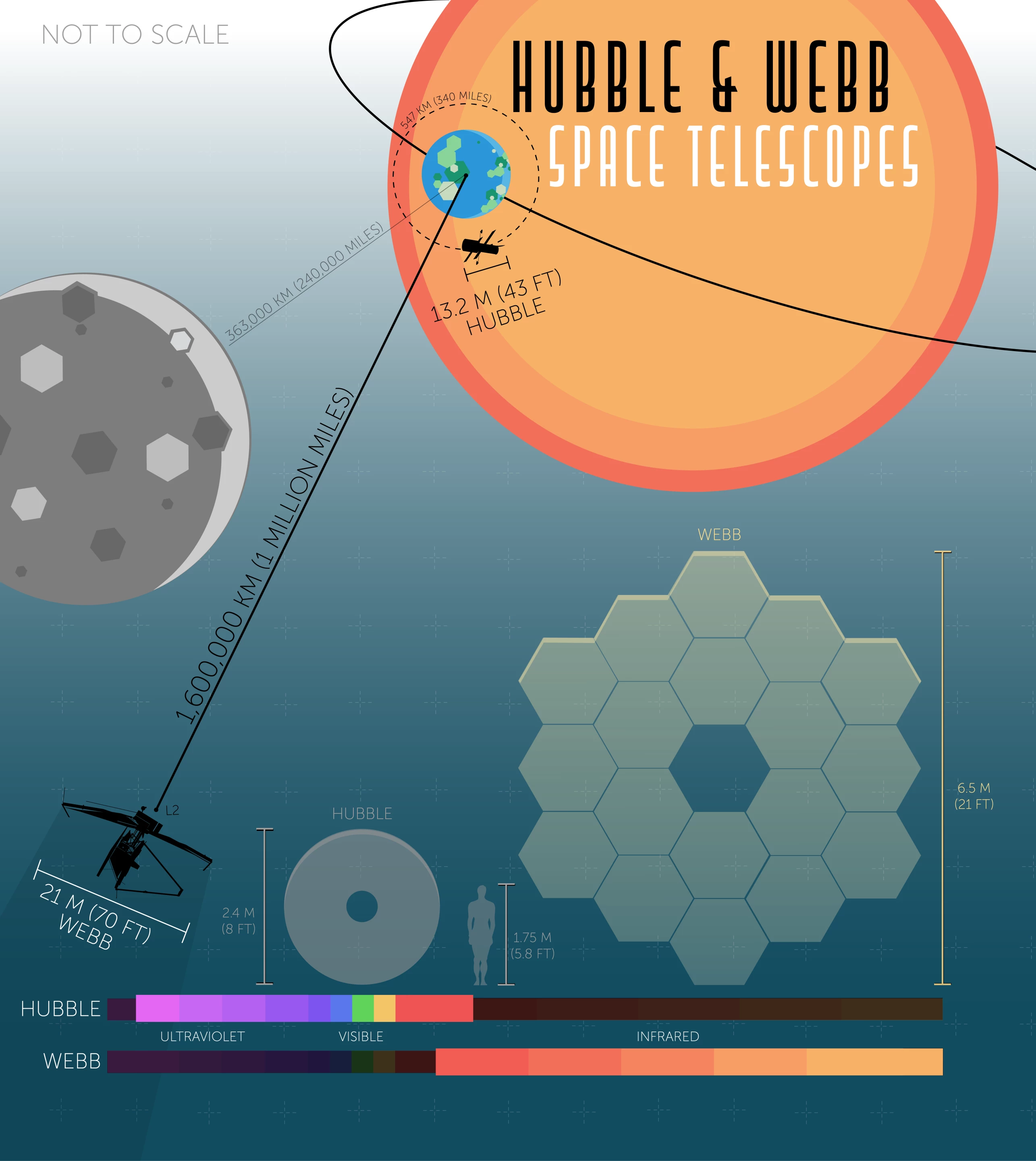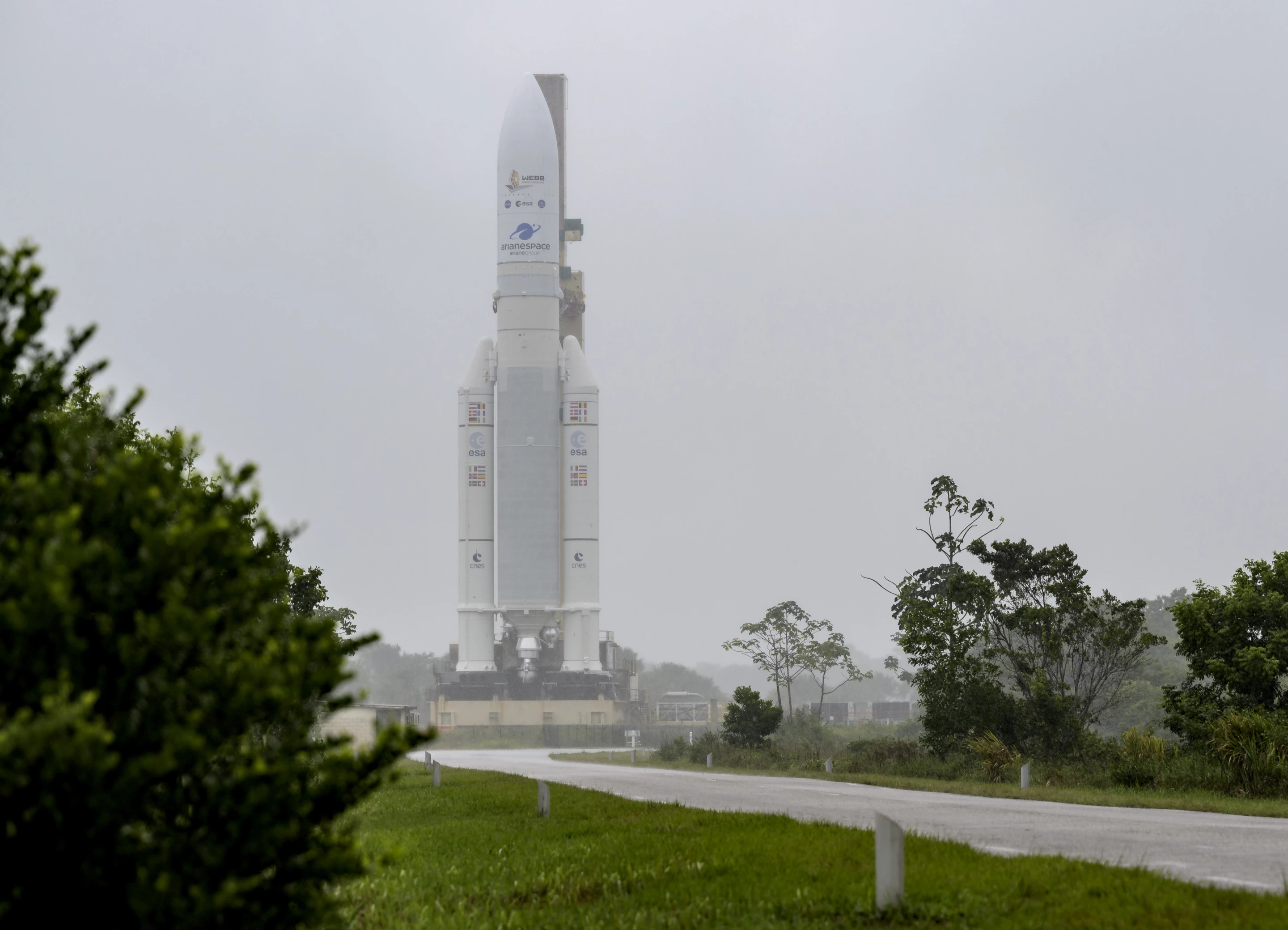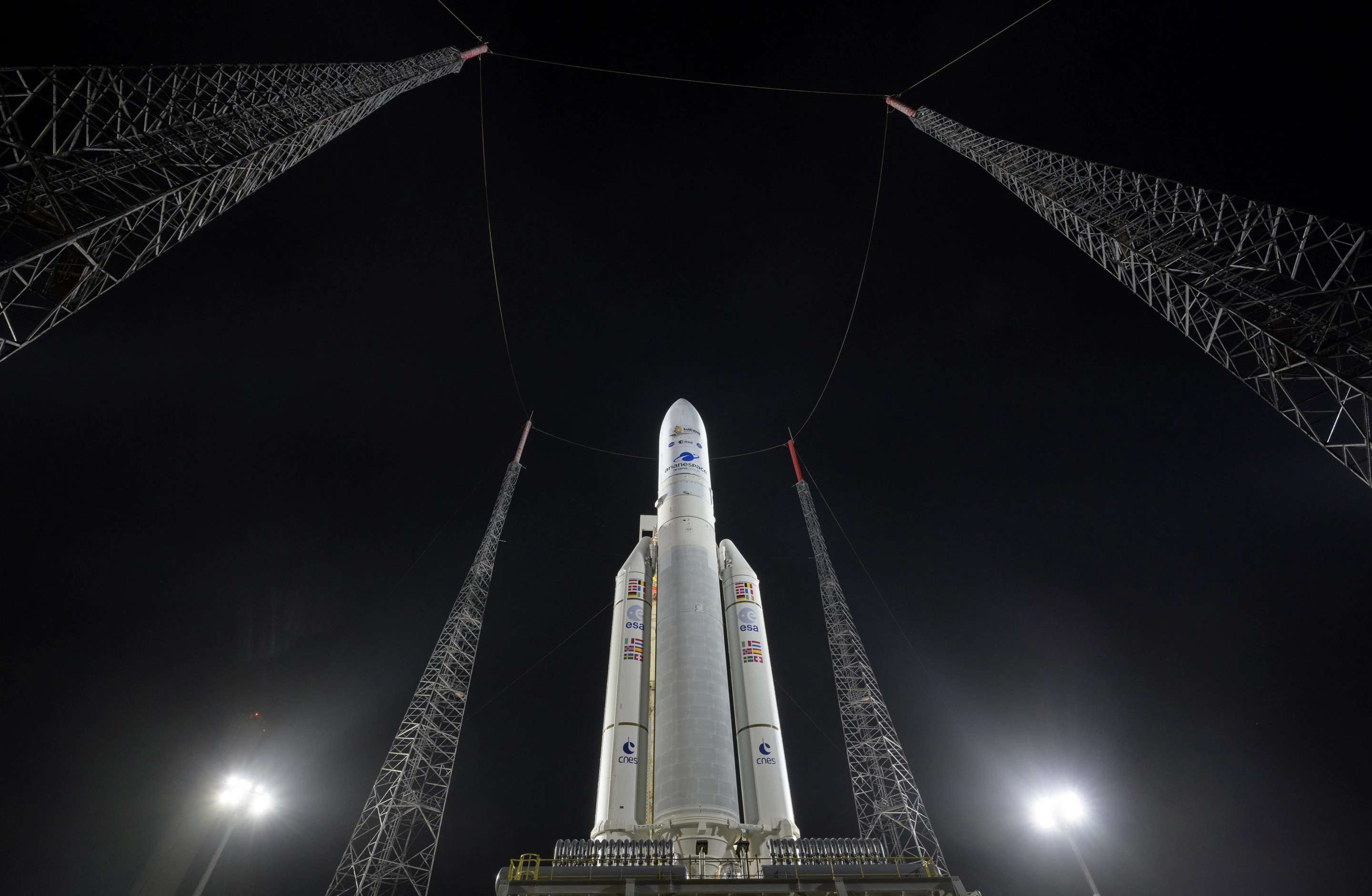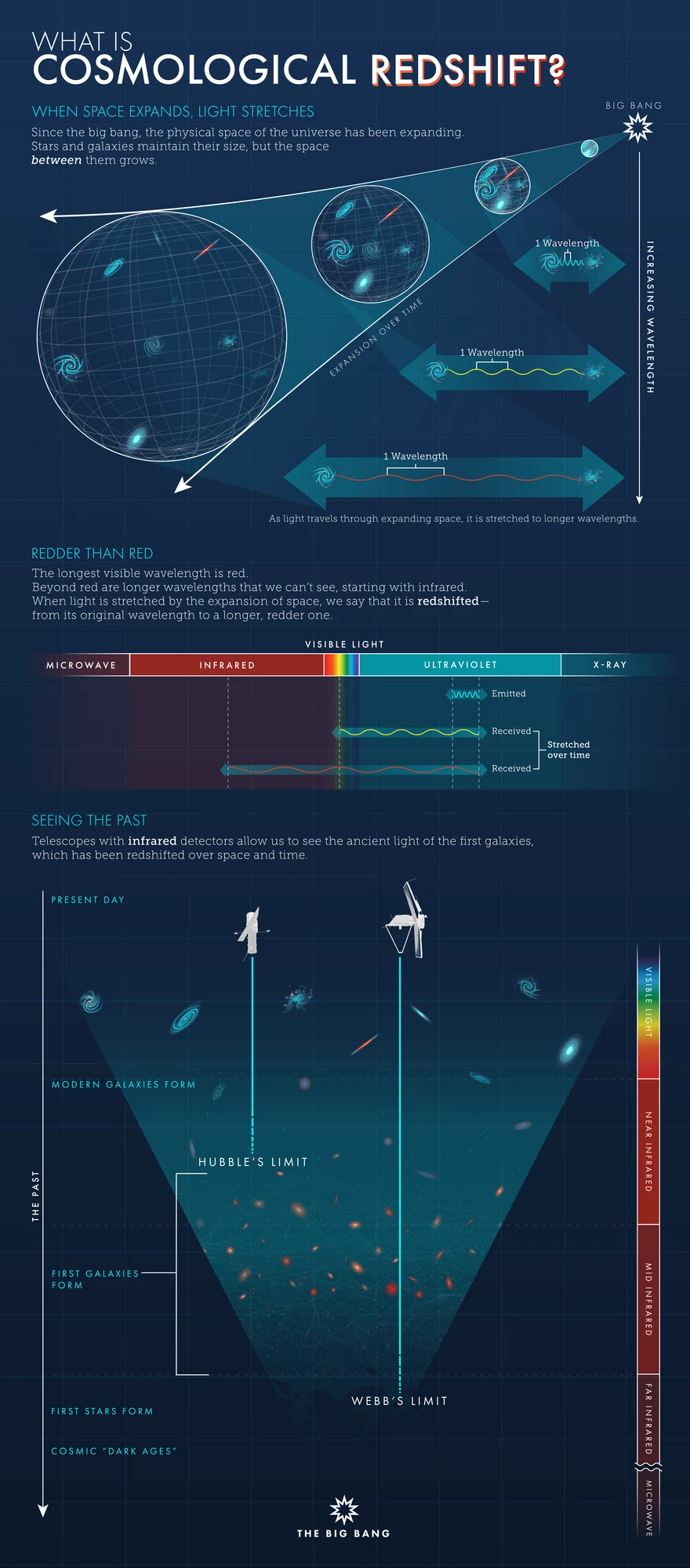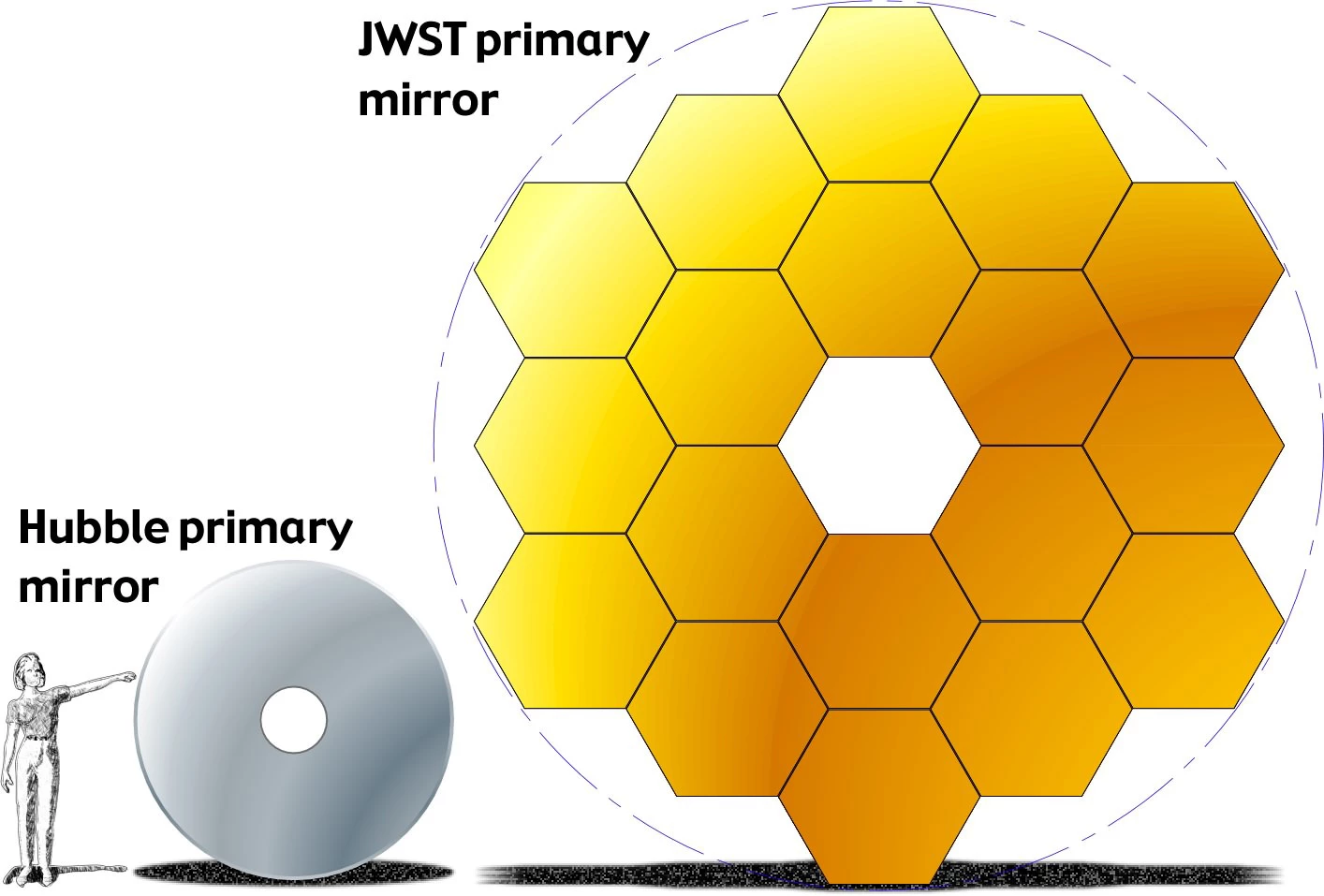One of the most ambitious space projects since the Apollo era roared into space today as NASA's long-delayed James Webb Space Telescope lifted off at 7:20 am EST (12:20 GMT) atop an Ariane 5 rocket from ESA's Centre Spatial Guyanais in French Guiana.
Today's unusual Christmas Day launch was the result of the delays that have dogged the James Webb Space Telescope (JWST) since it was conceived as a successor to the famous Hubble Space Telescope in 1996.
The original launch date was set for 2007, but a review of the project resulted in a drastic redesign of the spacecraft and the launch was delayed until sometime between 2015 and 2018. This became June 2019, then May 2020, March 2021, October 2021, then December 18, 2021. The unexpected release of a clamp band while installing the JWST in the Ariane 5 produced unwanted vibrations that required further system flight-worthiness tests and the date was set back to December 22, then December 24, and, finally, December 25 due to bad weather on the northeastern coast of South America.
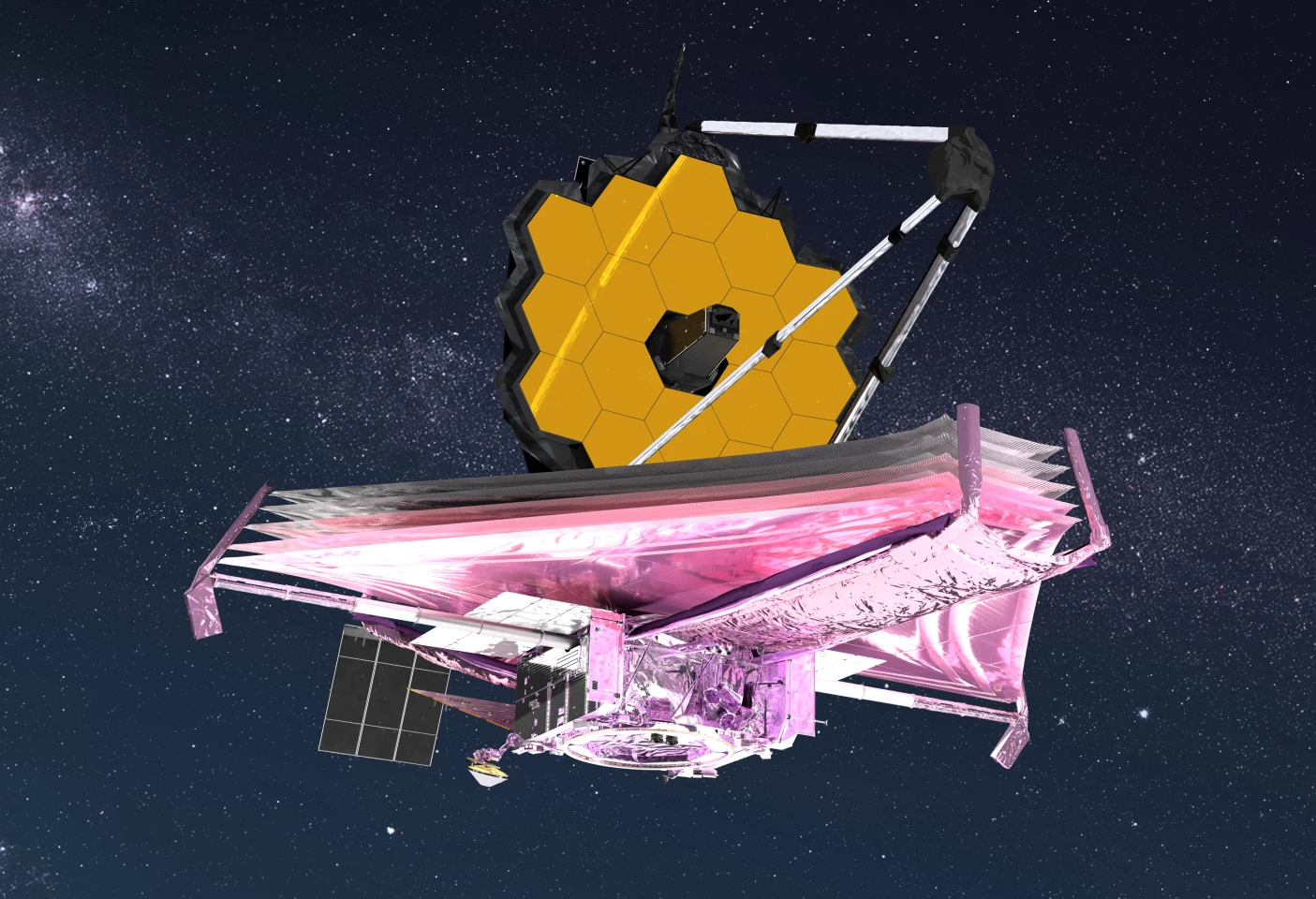
The Ariane 5 ignited its engines 23.7 seconds prior to launch, with the combination of the liquid-fueled core stage and the two strap-on solid rocket boosters generating 2.6 million lb of thrust for 135 seconds, or 90 percent of the total thrust of the launch vehicle.
After separation from the first stage, the cryogenic-liquid, single-engine second stage burned for 945 seconds. At 206 seconds into the flight, the protective fairings were jettisoned at an altitude of 75 miles (120 km). About 30 minutes after liftoff, the JWST separated from the second stage and deployed its two-kW solar array. Two hours into the mission, the high-gain radio antennas will unfold and the spacecraft will make its first of three course correction thruster burns at the 12 hour mark.
The JWST is now on a direct course to its destination about one million miles (1.5 million km) from Earth, where it will orbit the Lagrange 2 (L2) point, which is one of five sites in space where the gravitational forces of the Earth and the Sun balance out, providing the telescope with a stable position for its planned 10-year mission that will allow its delicate instruments to never face the glare of the Sun or the Earth.

Built and operated as an international partnership between NASA, ESA and the Canadian Space Agency, the Webb is easily the largest telescope ever to be launched into space. Where the Hubble has a single primary mirror that measures 2.4 m (7.9 ft) across, the JWST has one that is 6.5 m (24 ft) in diameter, allowing it to see a firefly at a distance of a million miles away in space – if there are any there.
The new mirror is as revolutionary as the spacecraft that carries it. Instead of being in a single piece, it is made of 18 gold-plated beryllium hexagonal mirror segments measuring 1.32 m (4 ft). These are controlled by hundreds of actuators that allow the telescope to adjust its own optics. This is extremely important because the JWST will be over a million miles away. The Hubble mission's early days were marred by a design flaw that required astronauts to visit the telescope several times to make repairs and adjustments, but this won't be an option for the JWST – it has to be as self-reliant as possible.
Unlike the Hubble, which sees in visible and ultraviolet light, the JWST looks in the infrared range. This will allow it to see further into the past than any previous instrument by seeking out objects at the edges of the universe, which date back to near the beginning of time and are receding from us so fast that their light has shifted into the infrared band.

With this capability, the 6,500 kg (14,300 lb) Webb will look at how the first galaxies formed in the early universe, study star formation, learn more about how galaxies evolve, and focus on exoplanets in other solar systems to seek out evidence of potential life.
Unfortunately, this super vision requires the JWST to operate at temperatures below -223.2 °C (-369.7 °F), which is difficult to achieve in the full glare of the Sun. To do this, the telescope is equipped with a sun shield about the size of a tennis court that is made of five layers of thin sheets of a polyimide film called Kapton that are coated with aluminum. This material is stable across a wide range of temperatures and insulates the telescope, allowing the spacecraft to be hotter than boiling water on one side, but colder than liquid oxygen on the other.
This technological feat comes at a high price, which is part of the reason for the mission delays and the budget for the project exploding from US$1.6 billion to over US$10 billion. The JWST is simply too big to fit inside any current rocket, so it had to be designed so that the mirror could fold in on itself and the sun shield had to pack away like an intricate piece of origami. It will take weeks for the spacecraft to unpack itself and each step presents the possibility of a technical failure.
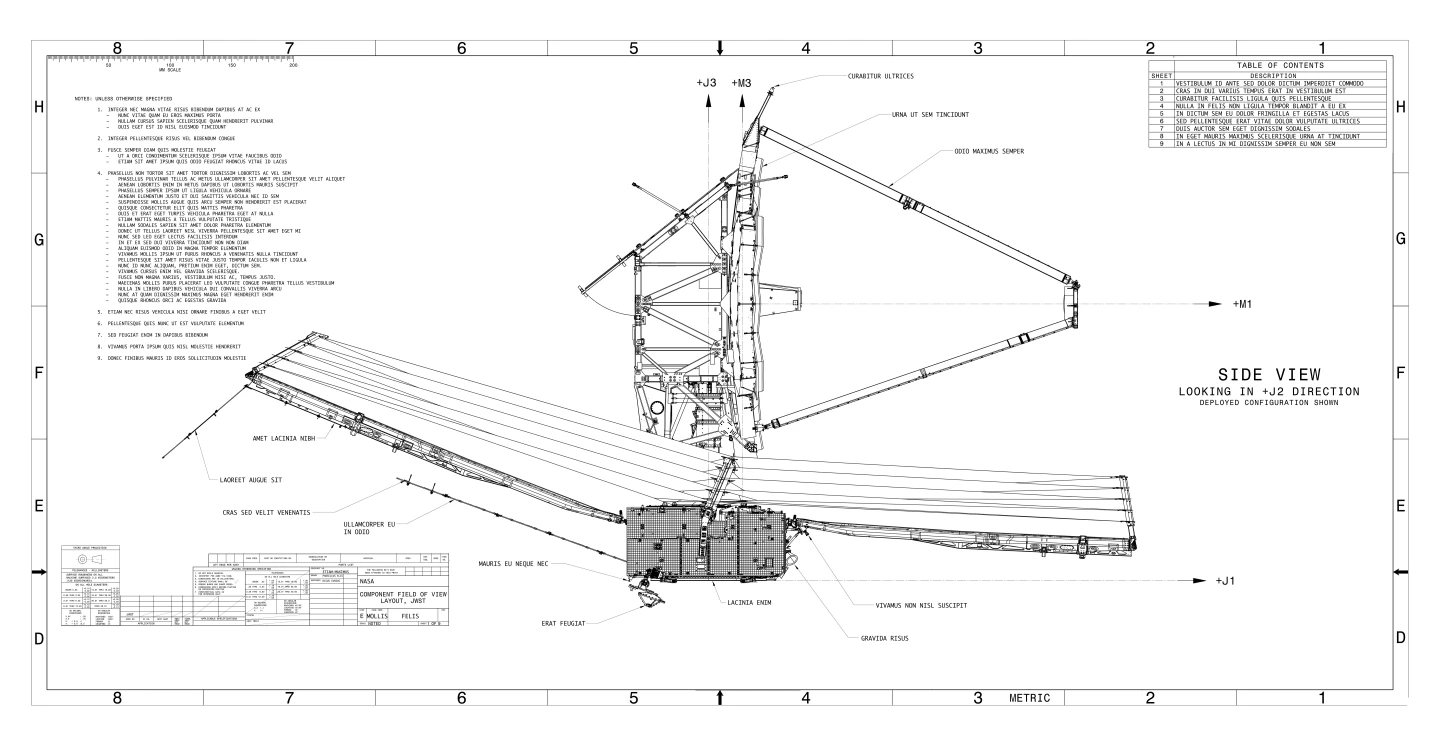
In addition, the telescope had to be built on Earth with deliberate imperfections in its measurements. It's expected that as it cools, these imperfections will correct themselves as the parts contract, but even the best Earthside tests are no guarantee that this will work as planned.
However, if all goes well, the craft will reach its destination in about a month and will be able to begin its six-month commissioning phase before starting work on probing the mysteries of the Cosmos.
The video below is a replay of NASA's live launch feed.
Source: NASA

